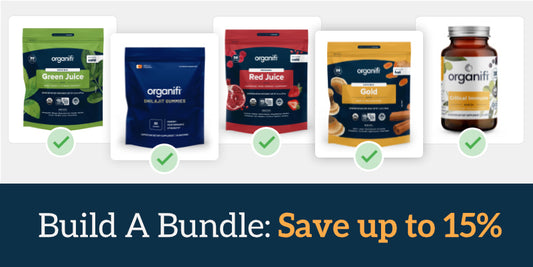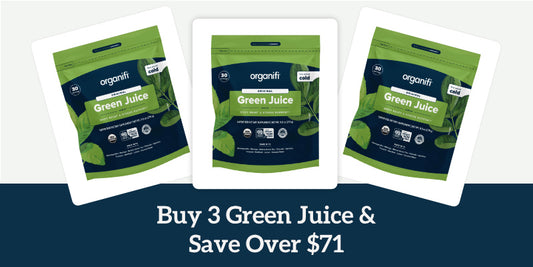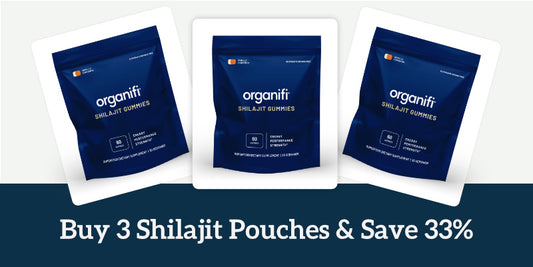What is an anti-inflammatory diet? I asked dumbfounded.
That was the first time I heard my holistic doctor talk about it. “An anti-inflammatory diet? What is that?”
It was a suggestion and an effective one at that. My mother had been suffering from some knee pain, inexplicable weight gain, and chronic fatigue, and was I talking about her issues with some friends -including Stan my holistic doctor- as if they were all separate issues, probably caused by age.
Turns out, they weren’t.
Not entirely anyway; mom was suffering from typical signs of chronic inflammation (think arthritis), and we hadn’t put two-and-two together.
I’m probably not the only one who’s ever asked that question; after all, not many of us can recognize inflammation in the body (it’s not just arthritis) or know what anti-inflammatory foods are. If you’re anything like me, you came here asking “ what is an anti-inflammatory diet? ” and possibly “how can it help me?”
Well, the good news is:
Research shows certain foods have anti-inflammatory properties and may help the body release chronic inflammation.
The even better news is that we collected that data and we’re laying it all out here in this post. So stick around to learn about the nutrients that present anti-inflammatory properties, our favorite anti-inflammatory foods, and everything you need to customize your own anti-inflammatory diet.
Inflammation, Chronic Inflammation and an Anti-Inflammatory Diet?
Inflammation is a natural part of the body's immune response and defense mechanism. When the immune system recognizes some harmful stimuli, it works to remove it and then pads the area with inflammation to start the healing process.
For example, if you twist or sprain your ankle, it may become inflamed for a few days or weeks until the body has returned to normal. This may also happen internally due to microbes, pollen, trauma or more - anything the body marks as a threat.
In general, this process can be acute or chronic.
If you’re interested in learning what is an anti-inflammatory diet? You must understand natural inflammation vs. chronic inflammation.
Acute Inflammation:
It starts rapidly and lasts only for a few days, like with the ankle sprain. It is characterized by apparent signs of inflammation like swelling, redness, heat, and pain. Once you’re healed, it stops.
If the inflammation persists, then you enter “subacute inflammation,” the period between acute and chronic inflammation which may last between 2 to 6 weeks.
Inflammation is meant to be temporary. Chronic disease is usually driven by inflammation.
Chronic Inflammation:
Chronic inflammation is a type of slow inflammation process that tends to last between several months to years, and which can be detrimental to your health. Since it tends to lack noticeable symptoms, it could go unnoticed and grow into more severe conditions.
Diseases like arthritis, heart disease, diabetes, Alzheimer's, depression, and cancer, have all been linked to chronic inflammation.
Some of the most common signs of chronic inflammation in the body are:
- Body pain
- Persistent Fatigue
- Insomnia
- Depression, anxiety, and, mood swings
- Constipation, diarrhea, or acid reflux
- Weight gain
- Frequent infections
- Bloating
Inflammation can show up anywhere in the body, but it can be frequently found in joints and the gut.
Because these are the two most visible forms of inflammation they are also the easiest ones to use as a benchmark for the benefits of anti-inflammatory foods.
Inflammation in the Gut
Symptoms like heartburn, gas, bloating, constipation, diarrhea, and can all be signs of inflammation in the intestines or the gut. Eczema, leaky gut, IBS, Crohn's disease, food allergies, celiac disease, and other gut-related conditions create the conditions for chronic inflammation.
Inflammation in the Joints
Joints connect two or more bones in your body and they’re highly susceptible to inflammation. You can find them in your knees, ankles, feet, knees, hips, elbows, and more. The joints are surrounded by soft tissue that cushions motion and blows when fluid starts to get accumulated in these areas you can get inflammation symptoms such as swelling, stiffness, and pain.
Some causes of joint inflammation:
- Arthritis
- Bursitis
- Injuries
- Dislocations
- Fracture (past or present)
- Osteoarthritis
- Synovitis
- Tendonitis
- Tennis Elbow
Don’t worry, below we’ll answer what is an anti-inflammatory diet?
What is "Anti-Inflammatory" and What is "Pro-Inflammatory?"
Any substance, food, or medication that reduces inflammation in the body is anti-inflammatory. Anti-inflammatory agents block the chemicals that cause redness, swelling, and pain in the body.
Ibuprofen, aspirin, and arnica, are all anti-inflammatory OTC substances for common inflammatory processes like sprains and headaches.
There are many pro-inflammatory causes in the body from trauma (like being injured in sports) to misidentification of organ, tissue, or cells as threats by the immune system.
However, studies show that poor eating habits increase inflammatory markers and elevate inflammatory responses in the immune system.
Diets with high saturated fats, trans-fats, or refined sugar consumption have been associated with higher production of pro-inflammatory molecules. There are anti-inflammatory foods and pro-inflammatory foods, as well.
The following have been linked to inflammation:
- Refined carbs, like white bread
- Sodas
- High fructose corn syrup
- Processed foods
- Trans fats
- Vegetable oils (see the benefits of olive oil)
- Excessive alcohol intake
- Excessive red meat consumption
- A sedentary lifestyle with mostly sitting
What is an Anti-Inflammatory Diet?
Even though there is no specific “diet” for people with conditions like rheumatoid arthritis (RA), IBS, or Gout; there are anti-inflammatory foods and anti-inflammatory diet options for everyone.
What is an anti-inflammatory diet? An approach to healthy eating focusing on nutrients with anti-inflammatory properties.
Research shows that some foods may help manage and control inflammation, reducing painful episodes and flair-ups.
An anti-inflammatory diet must be rich in antioxidants that reduce the number of free radicals in your system. Free radicals are reactive molecules that damage healthy tissue and may lead to inflammation.
Anti-inflammatory Foods and Nutrients:
- Fruits and vegetables: Blueberries, raspberries, acai, Brussels sprouts, red cabbage, kale, broccoli, and cauliflower, are high in antioxidants and polyphenols which are anti-inflammatory compounds.
-
Healthy fats: like avocados, olives, olive oil, and coconut oil in moderation.
-
Fiber: Fiber is associated with lowering levels of IL-6 and TNF-alpha, inflammatory markers. Eat more apples, bananas, oranges, strawberries, beans, and legumes.
-
Nuts: Almonds, walnuts, pinenuts, etc.
-
Green Tea: Tea polyphenols could lower CRP levels and inflammatory markers. Black tea is also an option.
-
Turmeric/Curcumin: effective anti-inflammatory food in both ayurvedic and modern medicine.
-
Fish Oil: The most abundant source of omega-3 fatty acids. Salmon, sardines, and herring are also a good option.
-
Mung bean: Rich in flavonoids (particularly vitexin and isovitexin) known for its anti-inflammatory effects.
-
Sesame Lignans: Sesame oil consumption reduces the synthesis of pro-inflammatory markers like prostaglandin, leukotrienes, and thromboxanes.
-
Cinnamon: just like curcumin and fenugreek, a traditional anti-inflammatory spice.
- Peppers: chili peppers, chili pepper flakes, and bell peppers.
- Dark chocolate: rich in healthy fats and antioxidants.
What is an anti-inflammatory diet (or any diet, for that matter) without micronutrients? Certainly not an effective one. Here’s a list of vitamins and minerals you’ll need in your own version of the anti-inflammatory diet.
- Magnesium
- Vitamin D
- Vitamin E
- Zinc
- Selenium
- Magnesium (one of the most anti-inflammatory dietary factors)
If you’re looking into defining and establishing an anti-inflammatory diet in your life, you can’t leave out these micronutrients. Here are a few different examples of what all the foods above, might look like in practice.
- Low-glycemic diet: Diet with a high glycemic index is related to high risk of stroke, coronary heart disease, and type 2 diabetes mellitus. It is beneficial to limit the consumption of inflammation-promoting foods
-
Low-fat diet: dietary saturated and synthetic trans-fats aggravate inflammation, skip those by learning to read labels and choosing poly-unsaturated fats like omega-3. Avoid trans fats like soybean and corn oil.
-
Mediterranean diet: emphasizing fatty fish, raw and green vegetables, and favoring olive oil to other forms of fat, the Mediterranean diet is rich in antioxidants and all the good stuff. When you ask “what is an anti-inflammatory diet?” this one is the most popular go-to.
- Low-carb diet: a diet rich in refined carbohydrates may lead to chronic inflammation; conversely a diet rich in whole foods that preserve the natural fibers is best.
How to Support Your Anti-Inflammatory Diet:
At Organifi we have been asking ourselves what is an anti-inflammatory diet? We know this lifestyle is one of the healthiest and most longevous ones.
- Add some exercise to your day: use the Pomodoro technique and stop what you’re doing every 25 minutes to do some stretches or dance to a song.
-
Rethink your snacks! It’s not enough to know what is an anti-inflammatory diet, you should also aim to put it in practice. Even your fitness drink could be pro-inflammatory if high on hidden sugars.
- Try our Sunrise to Sunset Bundle featuring many of the anti-inflammatory foods, vitamins, and minerals listed above. From our thyroid-friendly green juice full, our berry-powered Red Juice, to our maximum-strength-turmeric Gold Juice - this bundle packs an anti-inflammatory punch.
Green Juice is rich in antioxidants and polyphenols. Red Juice leverages blueberries, strawberries, raspberries, cranberries, and acai with other antioxidant superfoods. Gold tea rounds it up with maximum-strength curcumin, cinnamon, the stress-killer Reishi mushroom and more. Soon, we’ll add a joint-specific mix to our catalog - stay tuned.
So, what is an anti-inflammatory diet? It’s a natural approach to eating based on foods that help suppress inflammation markers and reduce oxidative stress.
To reduce inflammation in the body, learn what is anti-inflammatory, eat more anti-inflammatory foods and fewer pro-inflammatory ones
Base your anti-inflammatory diet on whole foods with nutrient-dense profiles that are particularly rich in antioxidants — they minimize the work for the immune system. Avoid processed foods, refined sugar, excessive alcohol, and empty white carbs.




